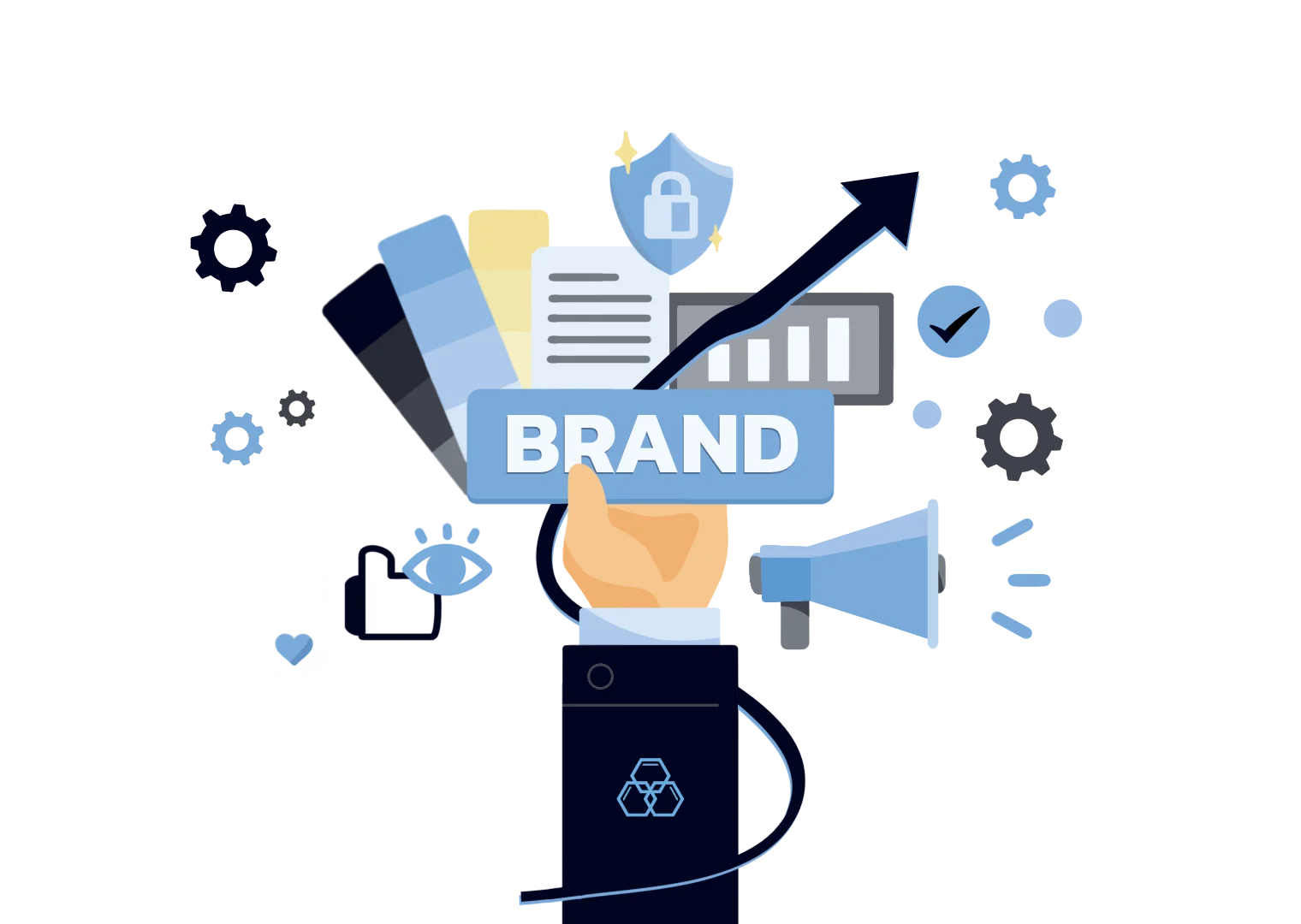A strong brand builds trust, loyalty, and recognition; a key asset for any business. However, as trends and customer preferences evolve, even the most successful brands must adapt to remain relevant.
This is where rebranding comes in.
It's a powerful approach whether you're looking to modernize your brand, appeal to a new audience, or reflect changes in your business. In this guide, we’ll walk you through the essentials of a successful rebrand: what it means, the typical timeline, and the potential costs involved.
What is Rebranding?
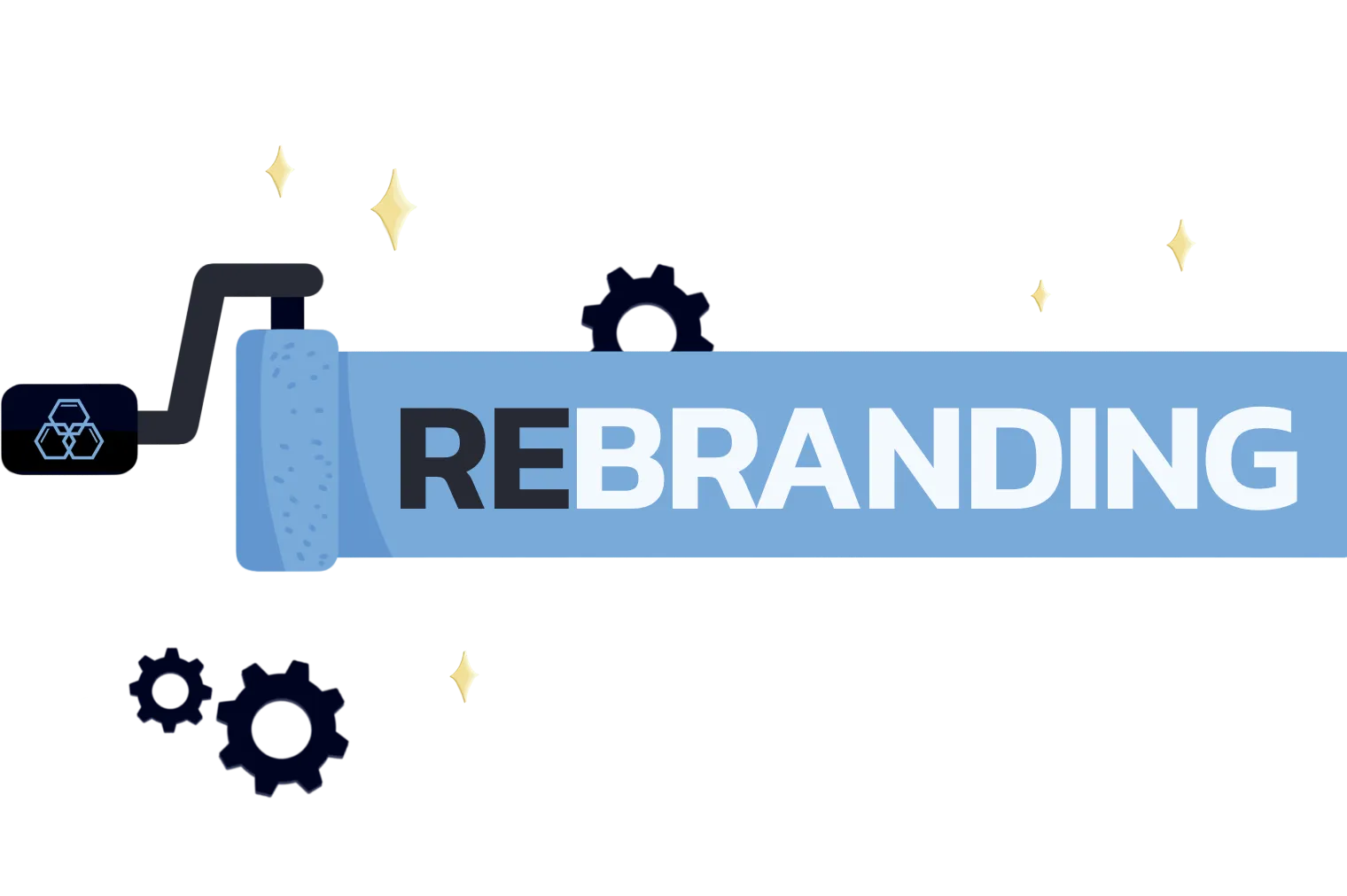
Rebranding is a brand-building strategy that transforms a company's public image, including its name, logo, visual identity, messaging, and sometimes core values. It aims to change how a brand is perceived to better align with a new business direction, appeal to a different audience, or differentiate from competitors.
Rebranding isn’t just surface-level updates—it seeks to improve the entire brand experience to reflect the company’s goals and vision.
Rebranding leads to significant changes but is often considered similar to a brand refresh. Here’s how they differ:
Rebranding vs. Brand Refresh
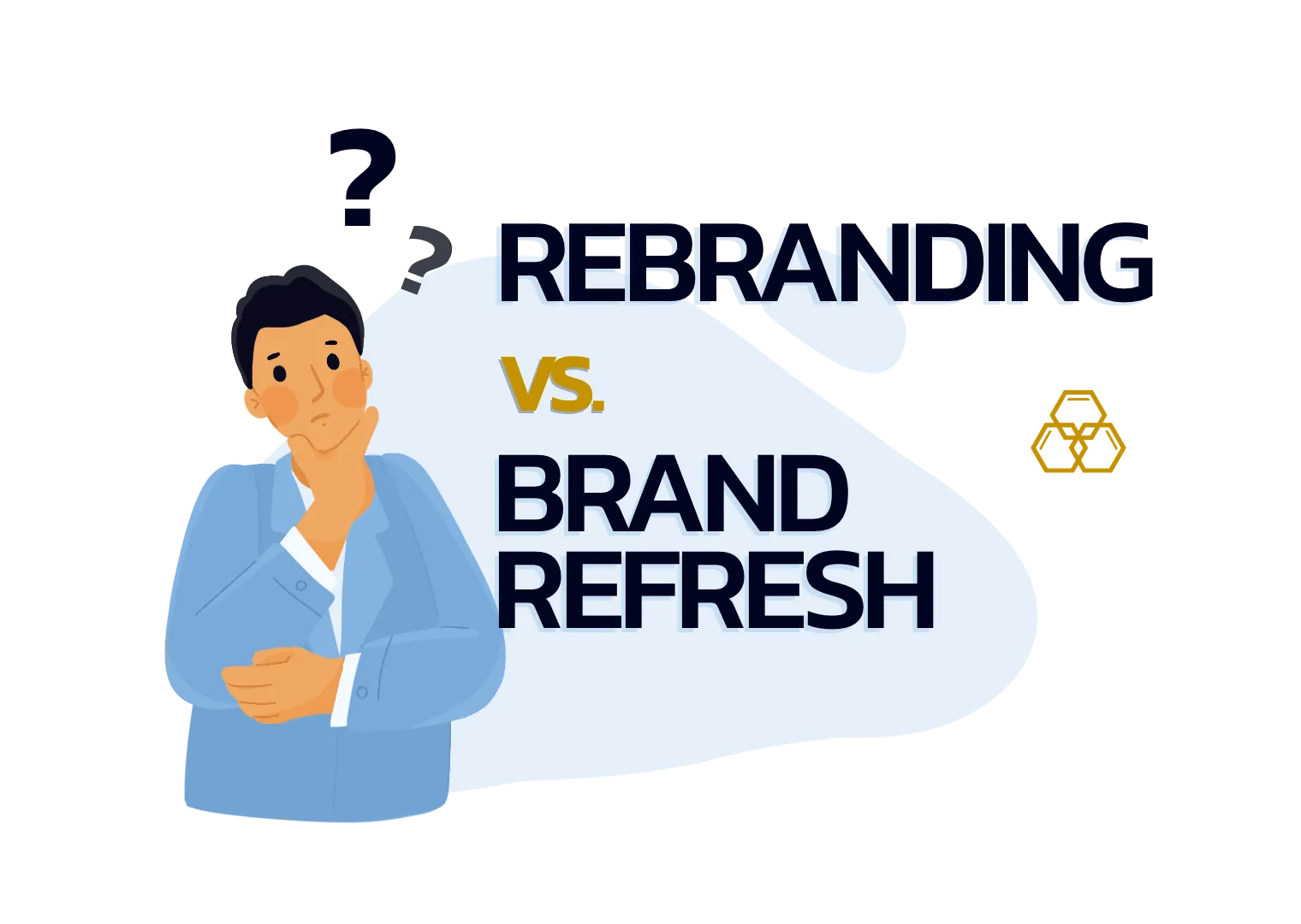
Scope
- Rebranding: Involves a complete overhaul of a brand’s identity, which may include its name, mission, visual elements, and overall messaging.
- Brand Refresh: Focuses on updating visual elements such as a logo redesign, colors palette and font update, while keeping the core identity intact.
Purpose
- Rebranding: Aims to reposition a company in the market, often to target a new audience, respond to significant changes, or move in a new strategic direction.
- Brand Refresh: Seeks to modernize the brand’s appearance without altering its essence or market positioning.
Timeline
- Rebranding: Typically a longer process that involves in-depth market research, strategy development, and implementation across all brand touchpoints.
- Brand Refresh: A quicker, simpler update that usually takes less time and requires fewer resources.
Impact
- Rebranding: Can significantly alter how customers perceive a brand, potentially attracting new customers or changing market perceptions.
- Brand Refresh: Primarily enhances the brand’s existing appeal, making it look more current while maintaining its established reputation.
When is the Right Time to Do Rebranding?
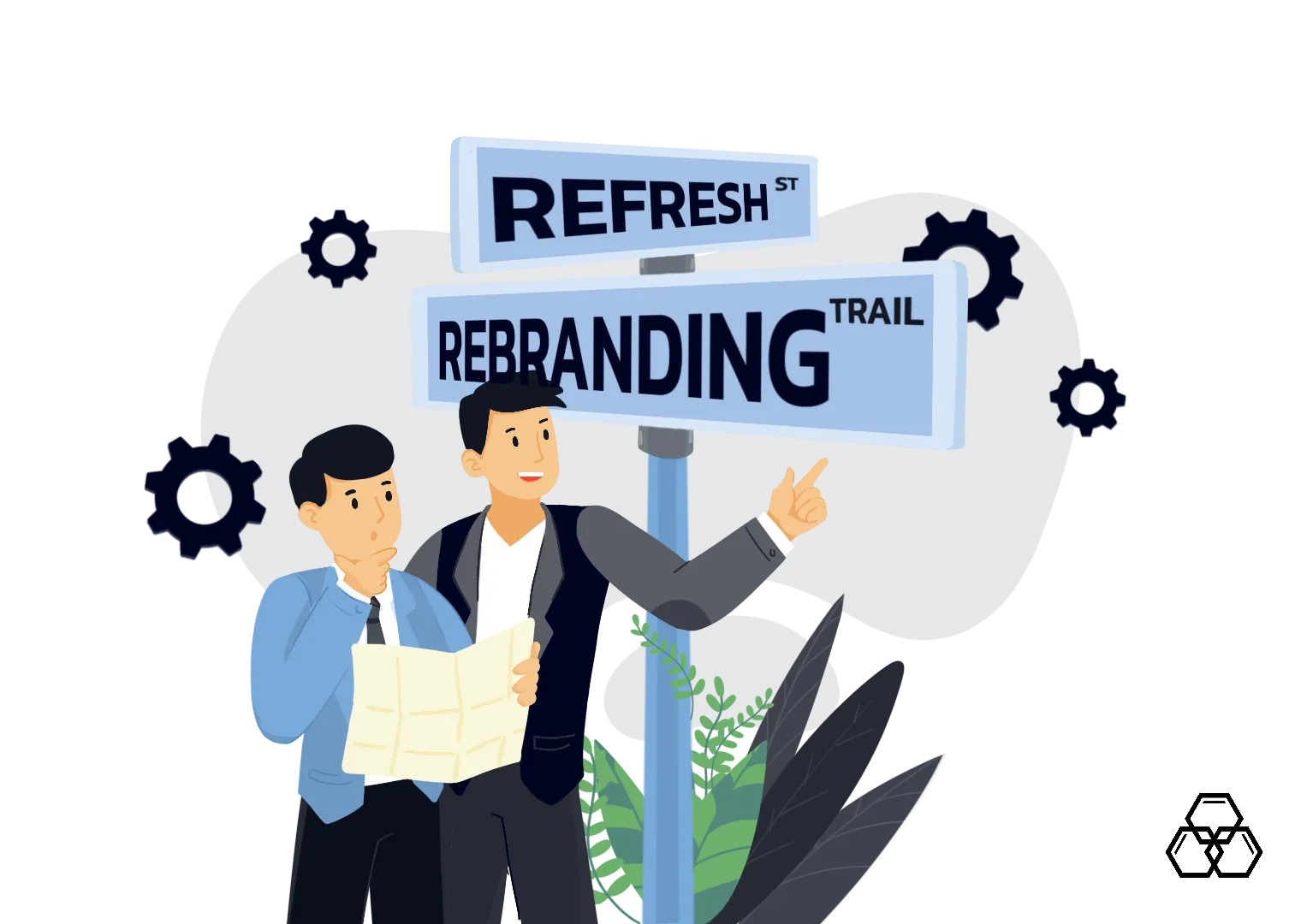
Rebranding is a major decision that requires careful consideration. While it can revitalize a business, knowing when the timing is right is important. Here are some key factors that signal that your brand needs rebranding:
1. Outdated Brand Identity
As trends change, a brand that was once cutting-edge can start to feel dated. An old-fashioned logo, color scheme, or design language may no longer resonate with modern consumers.
Example: A tech company that originally used a pixelated logo might find it too outdated in today’s sleek, minimalist design landscape. Updating their visual identity could signal innovation and relevance.
2. Target Audience Shift
If your target audience has evolved or expanded, your brand may no longer appeal to the right demographic. Rebranding helps align your identity with the interests and values of a new audience.
Example: A fashion brand that originally catered to teenagers may want to rebrand as its audience matures. Adopting a more sophisticated look and tone can appeal to older, more affluent customers.
3. New Business Direction
A shift in business models, products, or services often requires rebranding to reflect the new focus. If your brand no longer accurately represents what your company offers, it’s time for an update.
Example: A company that started as a coffee shop and now offers a full menu of artisanal food might need to rebrand to reflect this broader offering and attract food enthusiasts, not just coffee drinkers.
4. Mergers or Acquisitions
When companies merge or acquire other businesses, rebranding helps unify the brands under a new, cohesive identity that represents the combined entity.
Example: When two software companies merge, they might create a new name, logo, and messaging that integrates their strengths, presenting a unified front to customers and partners.
5. Negative Public Perception
If your brand has been associated with negative events or perceptions, rebranding can reset the narrative and distance your company from past issues.
Example: A company that has faced public backlash due to a product recall or scandal may rebrand with a new name, logo, and messaging that signals a fresh start and renewed commitment to quality.
6. Inconsistent Brand Experience
If your brand messaging, visuals, and customer experience have become inconsistent across platforms, rebranding can help align everything and create a cohesive identity.
Example: A business with different logos and tone of voice on their website, social media, and physical store may confuse customers. Rebranding ensures a unified experience across all channels, enhancing customer trust and brand recognition.
What is the Rebranding Process?
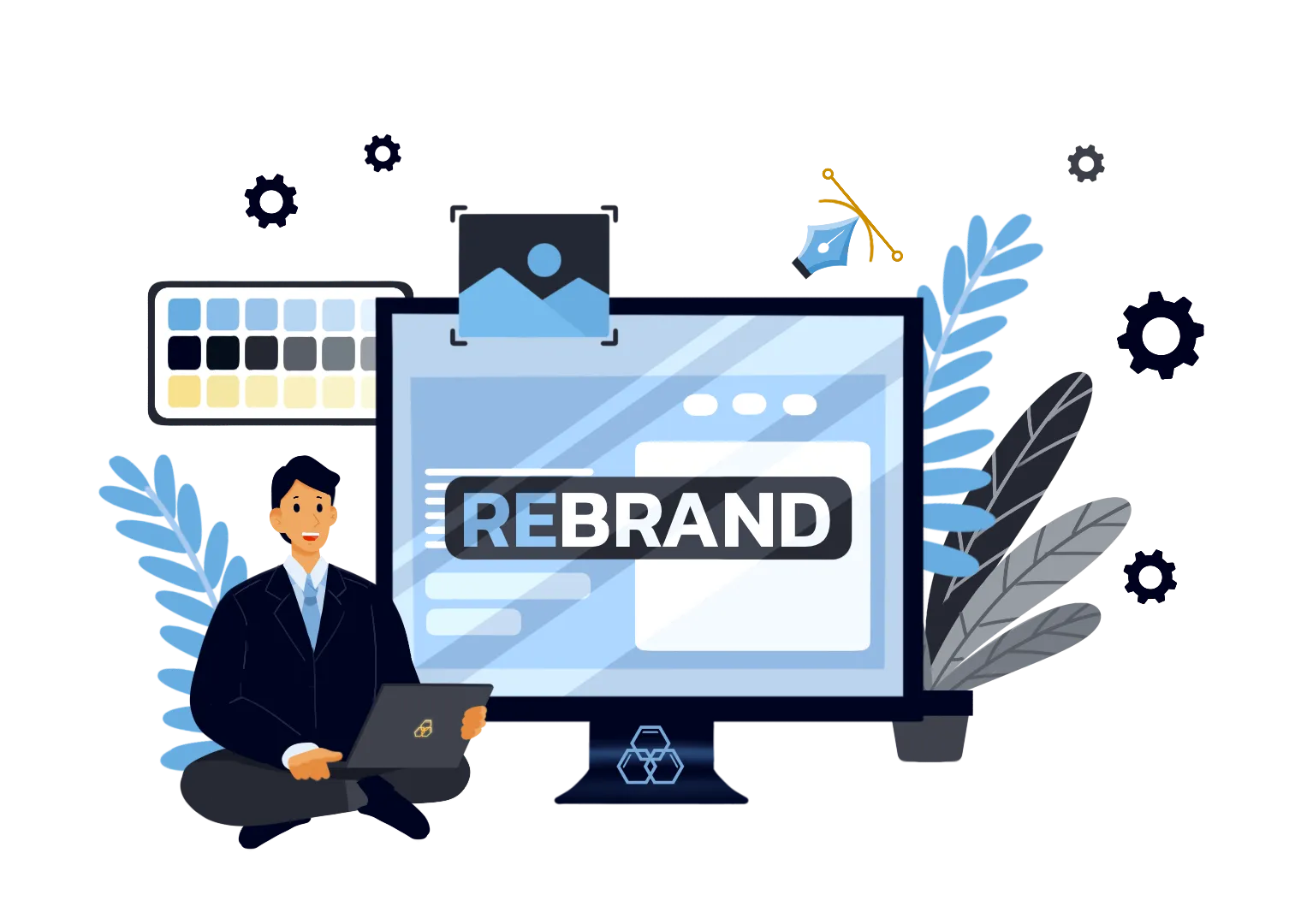
While the rebranding process varies depending on the project's scope, most rebranding efforts follow a similar roadmap. Below is a breakdown of the typical steps involved in the rebranding process and how long each stage might take:
1. Brand Audit & Research (2-4 weeks)
The first step is to evaluate the current brand and understand how customers, employees, and stakeholders perceive it. This involves conducting a brand audit and market research to identify areas that need improvement and opportunities for growth.
Key Activities:
- Assess the current brand’s strengths, weaknesses, and alignment with business goals
- Gather customer feedback through surveys or focus groups
- Analyze competitors and market trends
- Identify target audience shifts or gaps
2. Strategy Development (3-6 weeks)
With the insights from the brand audit, the next step is to develop a clear brand strategy. This includes defining the new brand image, positioning, core values, messaging, and target audience. The goal is to create a brand identity roadmap that aligns with business objectives.
Key Activities:
- Develop a new brand vision, mission, and core values
- Define the brand’s unique selling proposition (USP) and target market
- Outline the brand voice and messaging guidelines
- Set measurable goals for the rebrand
3. Creative Development (4-8 weeks)
Once the strategy is set, the creative team begins developing the new brand's visual and verbal elements. This phase includes designing a new brand logo, color palette, and typography and creating key brand assets such as taglines and marketing collateral.
Key Activities:
- Create a new logo and visual identity
- Design brand assets and marketing materials (business cards, letterheads, website, etc.)
- Develop brand guidelines to ensure consistency across all platforms
- Write updated brand messaging (taglines, mission statement, etc.)
4. Internal Rollout (2-4 weeks)
Before the rebrand is revealed to the public, it’s important to introduce it internally to employees and stakeholders. This helps ensure everyone understands the new direction and can serve as brand ambassadors during the external launch.
Key Activities:
- Host internal meetings and workshops to explain the rebrand
- Distribute new brand materials (internal documents, emails, etc.)
- Provide training on how to communicate the new brand to customers
5. External Launch & Marketing Campaign (4-6 weeks)
Once the internal team is on board, launching the rebrand to the public is time. This involves unveiling the new identity across all customer touchpoints, including the website, social media, and advertising campaigns.
Key Activities:
- Launch a new website and update digital channels with the new branding
- Run a marketing campaign to announce the rebrand (email, social media, PR)
- Notify customers and stakeholders about the new brand identity
- Monitor customer reactions and engagement with the new brand
6. Post-Launch Evaluation & Adjustments (Ongoing)
The final step is to evaluate the rebrand's success and make any necessary adjustments. Tracking key metrics like customer engagement, brand awareness, and sales can help assess whether the rebrand meets its goals.
Key Activities:
- Monitor brand performance using analytics and customer feedback
- Make adjustments to messaging or design as needed
- Continue refining the brand to maintain consistency and relevance
Typical Timeline for a Rebrand Process
- Brand Audit & Research: 2-4 weeks
- Strategy Development: 3-6 weeks
- Creative Development: 4-8 weeks
- Internal Rollout: 2-4 weeks
- External Launch & Marketing: 4-6 weeks
A rebrand can take anywhere from 3 to 6 months in total, depending on the complexity and scale of the project. This timeline ensures that each step is thoroughly executed, leading to a smooth transition and a strong new brand identity.
What is the Cost of Rebranding?
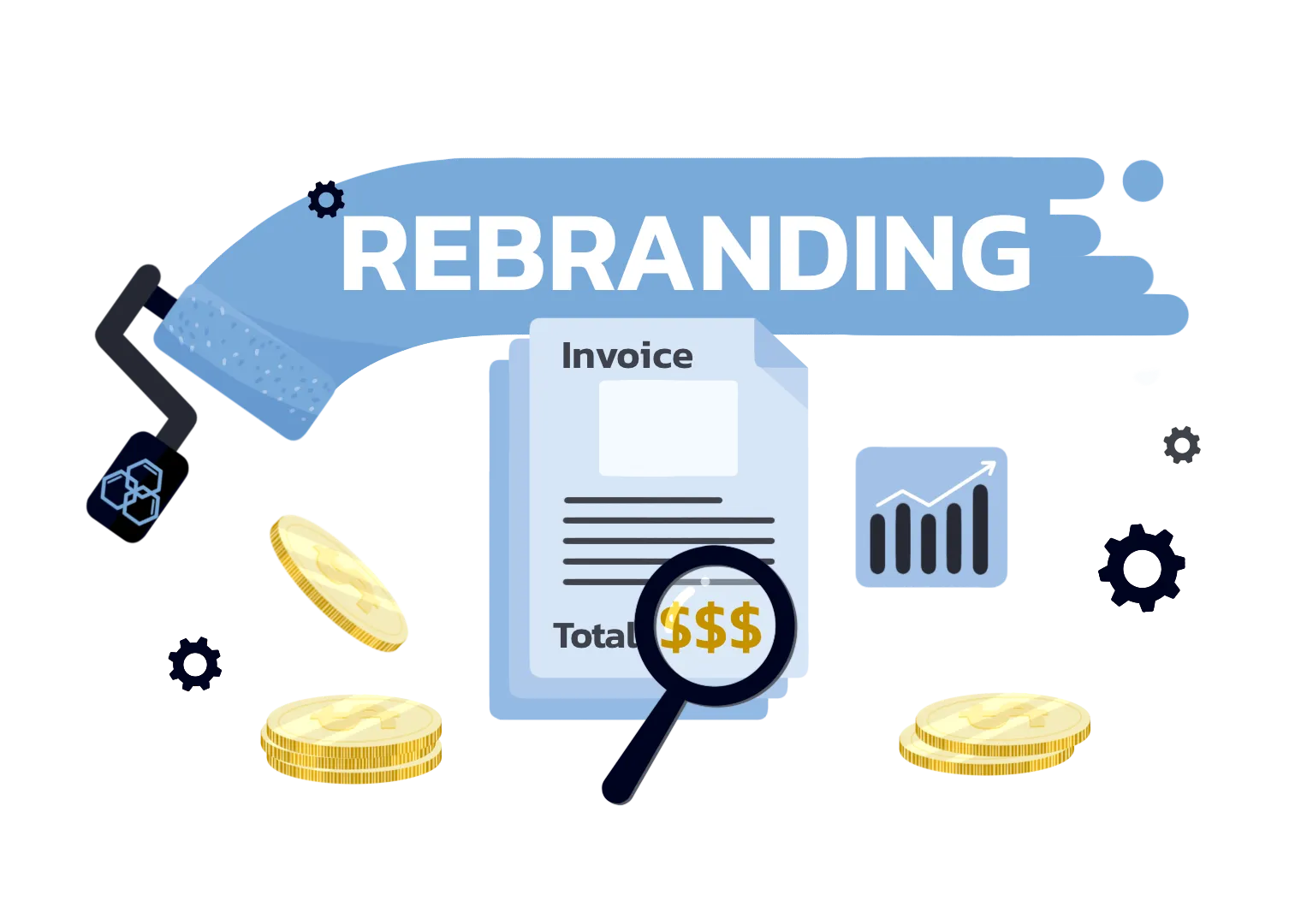
The cost of rebranding varies depending on the size and scope of the project. Here are some of the factors that affects it:
1. Scope of the Rebrand
A full rebrand, which may include a new logo, name, website, and messaging overhaul, is more expensive than a simpler brand refresh. The broader the scope, the more resources are required to execute the rebrand effectively.
2. Market Research & Brand Audit
A comprehensive rebrand typically starts with in-depth market research and a brand audit, which can be costly. This research ensures that the rebranding is strategically sound and aligned with customer expectations.
3. Creative Development
Designing your new logo, visual identity, and brand assets requires skilled professionals, such as graphic designers and copywriters. The complexity and quality of these designs directly influence the cost.
4. Website Redesign
If your rebranding includes a new website, this will be a significant part of the cost. Website design involves aesthetics, functionality, user experience, and possibly reconfiguring back-end systems.
5. Marketing & Launch Campaigns
Once your rebrand is ready, you must invest in marketing efforts to introduce the new identity. This includes social media campaigns, email marketing, PR, and paid advertising.
How Hiring a Branding Agency Can Be Cost-Effective

While rebranding might seem costly, hiring a professional branding agency makes the process more efficient and cost-effective in the long run. Here’s how:
- Expertise & Experience: Branding agencies bring specialized knowledge and experience, ensuring your rebrand is strategically sound and creatively executed. Their expertise helps avoid costly mistakes if you handle rebranding strategy internally.
- Comprehensive Services: Agencies provide a full suite of services, from market research and strategy development to design and marketing. This one-stop approach can save you time and resources, rather than hiring multiple freelancers or firms for different project parts.
- Consistency and Quality: Ensuring your new brand identity is consistent across all platforms is crucial for long-term success. Agencies are skilled at managing large-scale projects and can maintain consistency in your messaging and visual elements, avoiding costly re-dos.
- Efficient Project Management: Branding agencies are experts in managing timelines and budgets. They can streamline the rebranding process, keeping your project on track and within your budget while delivering high-quality results.

Final Thoughts
Rebranding is a powerful tool for businesses looking to stay relevant, grow, or completely transform their identity. While it does involve a process that certainly costs the company, the long-term benefits of connecting with your target audience, standing out from competitors, and staying aligned with your business goals make it a worthwhile investment.
Thinking of doing a rebrand? Let’s us know how Evolv can help you!
Also, check out our blog and be updated with the latest insights on effective brand-building that delivers results.




